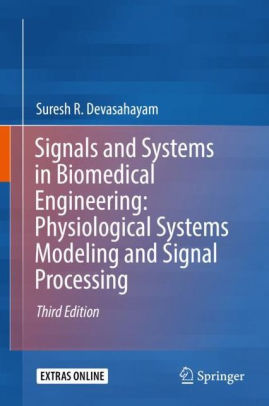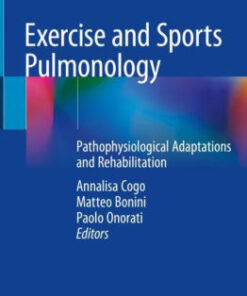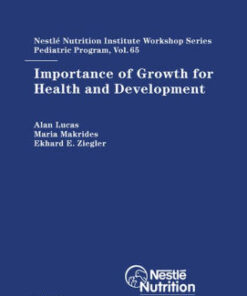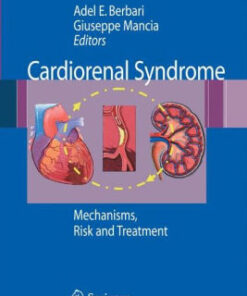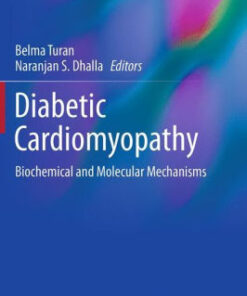(PDF) Signals and Systems in Biomedical Engineering 3rd Edition by Devasahayam
$18.00
Download instantly Signals and Systems in Biomedical Engineering – Physiological Systems Modeling and Signal Processing 3rd Edition by Suresh R. Devasahayam. It is ebook in PDF format.
ISBN-10: 9811335303 ISBN-13: 9789811335303
Preview
This is the PDF eBook version for Signals and Systems in Biomedical Engineering – Physiological Systems Modeling and Signal Processing 3rd Edition by Suresh R. Devasahayam
Table of Contents
Module1_Introduction to Signal Measurement and Analysis in Physiology.- Chapter 1.1 Measurement, Analysis, Modelling and Simulation.- Chapter 1.2. Physiological Measurement – ECG as an example.- Chapter 1.3. Sensors and Measurement.- Chapter 1.4. Characterizing Transducers – A Systems Approach.- Chapter 1.5. Interference and Noise.- Chapter 1.6. Simulation of Systems and Virtual Experiments.- Chapter 1.7. Execises.- Module 2_Basics of Signals and Systems.- Chapter 2.1. Time Domain Signals and Systems.- Chapter 2.2. Linear Systems: Impulse Response.- Chapter 2.3. Frequency Decomposition of Signals.- Chapter 2.4. Frequency Response and Pole–Zero plots.- Chapter 2.5. Random Signals.- Chapter 2.6. Exercises.- Module 3_Signal Filtering and System Control for Physiology.- Chapter 3.1. Filters in Different Domains- Mechanical filters, particle filters, electrical filters.- Chapter 3.2. A Common Sense View of Optimal filtering.- Chapter 3.3. Formal Definition of Optimal Filtering.- Chapter 3.4. Standard Filters: LPF, HPF, BPF, BSF.- Chapter 3.5. Realization of Simple Filters, Ensemble Averaging.- Chapter 3.6. Filtering Physiological Signals.- Chapter 3.7. Feedback Control Systems.- Chapter 3.8. Exercises.- Module 4_Digitization and Discrete Systems.- Chapter 4.1. Digitization – From the Physical World to Computers and Back Again.- Chapter 4.2. Sampling, Quantization and Reconstruction Methods.- Chapter 4.3. Discrete Systems – Z transforms.- Chapter 4.4. Discretization of Systems – Bilinear transforms.- Chapter 4.5. Digital Feedback Control and Hybrid Systems.- Chapter 4.6.Exercises.- Module 5_Discrete Signal Processing.- Chapter 5.1. Digital Filtering and Sytem Identification.- Chapter 5.2. Discrete Fourier Transforms.- Chapter 5.3. Power Spectrum and Short-Time Fourier Transform.- Chapter 5.4. The Wavelet Transform.- Chapter 5.5. Time-Series Analysis.- Chapter 5.6. Programming Exercises.- Module 6_Numerical Methods, Graphics and Haptics for Modeling.- Chapter 6.1. Introduction to Computer Simulations.- Chapter 6.2. Geometry of 3D graphics.- Chapter 6.3. Animation and Image Manipulation.- Chapter 6.4. Virtual Experiments.- Chapter 6.5. Using electromechanical systems to provide “feel” – haptics.- Chapter 6.6. Basic haptics design.- Chapter 6.7. Exercises.- Module 7_Model-based Analysis of Physiological Systems.- Chapter 7.1. Biophysical Models and Black-Box Models.- Chapter 7.2. Purpose of Physiological Modelling and Signal Analysis.- Chapter 7.3. System identification in Physiology – sensory receptors, eye movement.- Chapter 7.4. Opening the Loop – Estimating Loop Transfer Function.- Chapter 7.5. Experimental Methods for System identification.- Chapter 7.6. Model-Based Noise Reduction and Feature Extraction.- Chapter 7.7. Exercises.- Module 8_Nerve Action Potential, Propagation and Stimulation of Tissue.- Chapter 8.1. Nerve Excitation and Propagation.- Chapter 8.2. The Hodgkin-Huxley Model, Fluctuation Analysis.- Chapter 8.3.Action Potential Propagation.- Chapter 8.4. Stimulation of Nerves within Tissue.- Chapter 8.5. Strength-Duration and Recruitment Relations.- Chapter 8.6. Electrical and Magnetic Stimulation.- Chapter 8.7. Exercises.- Module 9_Skeletal Muscle Contraction.- Chapter 9.1. Skeletal Muscle Behaviour, Structure and Organization.- Chapter 9.2. The Sliding Filament Model.- Chapter 9.3. Force Generation: Huxley‘s Model.- Chapter 9.4. Linearization of Skeletal Muscle Models.- Chapter 9.5. Simple haptics models of skeletal muscle as a non-linear spring.- Chapter 9.6. Applications of Muscle Modelling.- Chapter 9.7.Exercises.- Module 10_Neural Firing Analysis.- Chapter 10.1. Neural Information Transmission.- Chapter 10.2. Pulse sequences and Modulation Theory.- Chapter 10.3.Estimating Nerve Firing Rate.- Chapter 10.4. Spike Detection and Demodulation.- Chapter 10.5. Applications of Firing Rate Demodulation.- Chapter 10.6. Exercise.- Module 11_The Electromyogram – Modelling and Analysis.- Chapter 11.1.Recording Myoelectric Signals.- Chapter 11.2. Electrode Transfer Function.- Chapter 11.3. Motor Unit Action Potential.- Chapter 11.4. Voluntary EMG Model.- Chapter 11.5. EMG Analysis.- Chapter 11.6. Hear, see, feel – adding realism to EMG models.- Chapter 11.7. Exercises.- Module 12_Neuromuscular Control.- Chapter 12.1.Neuromuscular Reflex.- Chapter 12.2. Unit of Movement: Two Muscle Joint.- Chapter 12.3. Modelling Reflex Control of Movement.- Chapter 12.4. Movement Analysis.- Chapter 12.5. Understanding Pathology Using Neuromuscular Models.- Chapter 12.6. Incorporating haptics in neuromuscular models.- Chapter 12.7. Simulating spasticity – what we can simulate is what we understand.- Chapter 12.8. Exercises.- Module 13_Cardiovascular Modelling.- Chapter 13.1. The Cardiovascular System.- Chapter 13.2. Modelling Blood Flow.- Chapter 13.3. Electrical Analogue of Fluid Flow in Vessels.- Chapter 13.4. Model of Coronary Circulation.- Chapter 13.5. Simulating the “feel” of pulse auscultation.- Chapter 13.6.Applications of Cardiovascular Modelling.- Chapter 13.7. Exercises.-Module 14_Immune Response to Infection.- Chapter 14.1. The Immune Response.-Chapter 14.2. Linearized Model of the Immune Response.- Chapter 14.3. System Equations.- Chapter 14.4. Stability Analysis.- Chapter 14.5. Extending the Model.- Chapter 14.6. Exercises
